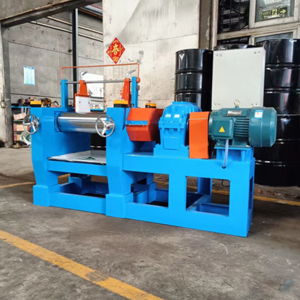The rubber industry relies on a variety of machines to transform raw materials into the final products we use every day. One of the most important pieces of equipment in this process is the rubber mixing mill machine. Let’s delve into the world of these industrial workhorses and explore their functionalities.
What is a Rubber Mixing Mill Machine?
Imagine a giant rolling pin – that’s essentially what a rubber mixing mill machine is. It consists of two horizontally positioned, counter-rotating cylindrical rolls with a variable gap between them. The material is fed into this gap and gets squeezed, sheared, and folded by the rolls, leading to a thorough mixing process.
What are the Uses of Rubber Mixing Mills?
Rubber mixing mills are versatile machines used for various tasks in rubber processing:
- Mixing: This is the primary function. Raw rubber is blended with various additives like fillers, curatives, and pigments to achieve the desired properties for the final product.
- Sheeting: The mill can reduce the thickness of the rubber compound into sheets of a specific dimension. This sheet can then be fed into other machines for further processing.
- Plasticizing: The friction generated by the rolls heats up the rubber, making it softer and more pliable. This improves its mixing efficiency and workability.
- Warming Up Rubber: Before feeding rubber into other machines, the mill can be used to bring it to a specific working temperature.
Advantages of Modern Rubber Mixing Mills
Modern rubber mixing mills offer several advantages over older models:
- Enhanced Productivity: Improved designs streamline the mixing process, saving time and labor costs.
- Versatility: These machines can be used in both large-scale and small-scale operations, making them suitable for businesses of all sizes.
- Energy Efficiency: Modern mills are designed to consume less energy, reducing operational costs.
- Safety Features: Advanced models incorporate safety features like emergency brakes and improved guarding systems to protect operators.
Conclusion
Rubber mixing mills are vital cogs in the rubber production industry. Their ability to mix, sheet, plasticize, and warm up rubber makes them essential for creating various rubber products we encounter daily. As technology advances, we can expect even more efficient and user-friendly rubber mixing mills in the future.







